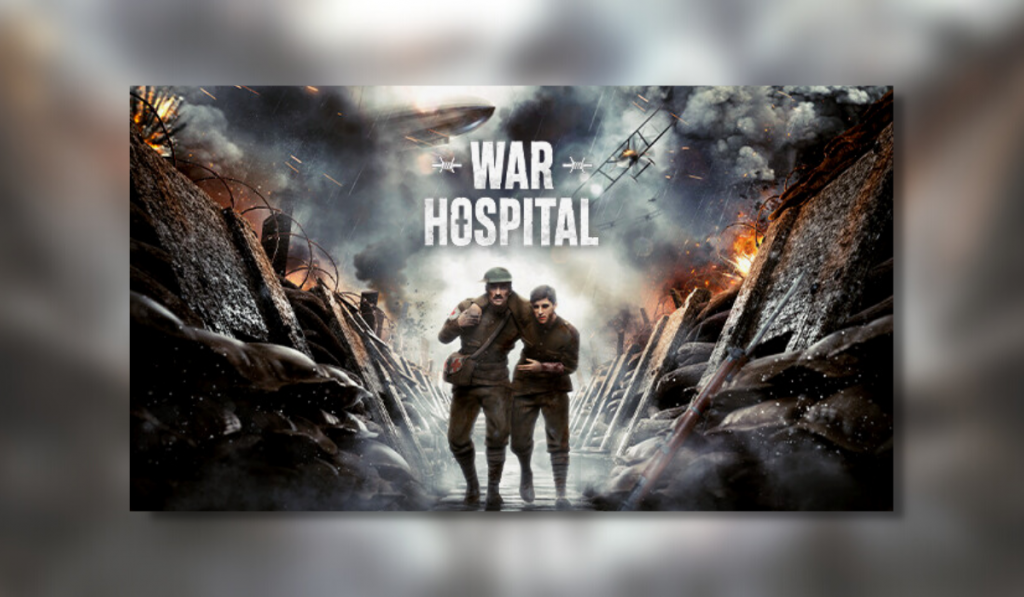
War Hospital is a management game and medical simulator set in World War 1. Published by Nacon and developed by Brave Lamb Studios L.A. Released on 11/01/2024, War Hospital is available for £34.99 on PlayStation 5 and Xbox Series X and S, or £24.99 on Steam.
Well, You Can’t Save Everyone
You are the bridge between the soldiers and victory. Help as many soldiers as possible, make tough decisions and help the war effort. Manage your hospital and its limited resources, hire Doctors and Nurses, keep staff and soldiers alive and raise their morale.
Gameplay
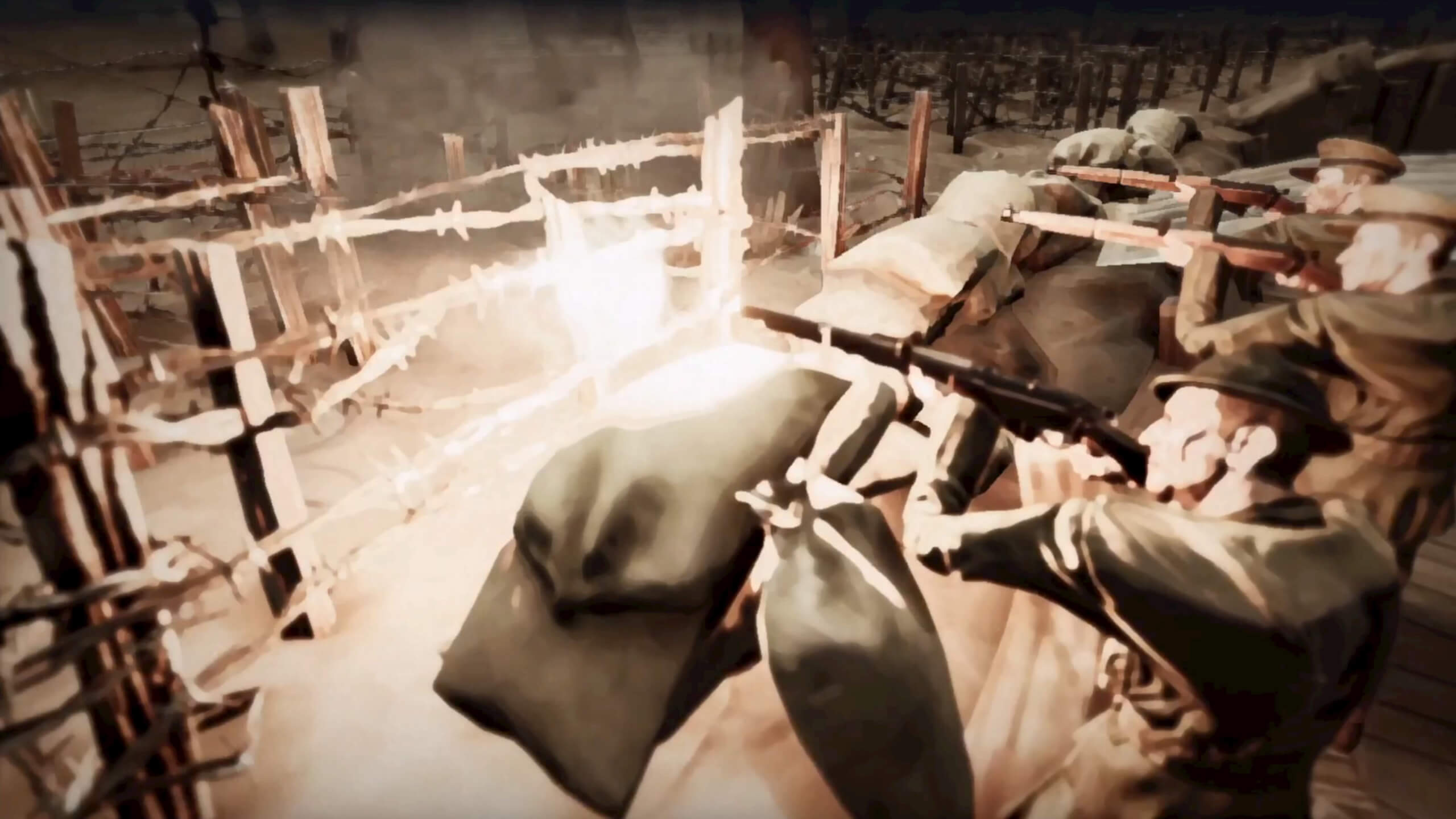
In War Hospital, players must hire staff, treat soldiers, care for the staff and soldier’s wellbeing, and defend the hospital from attacks. Before any of that, the player needs to hire staff to keep the patients and hospital going. To begin with, the players receive one doctor, three engineers, three medical teams (though classed as a singular unit) and two nurses.
The Staff & Their Roles
Each member of staff has an important role to fulfil in War Hospital. The staff roles are Doctor, Medic Team, Engineer, Nurse and Surgeon. Doctors diagnose and treat patients. If the patient needs an operation, a Surgeon is required. Nurses assist Doctors and care for patients before and after treatment. When the patients need to move to and from different locations, the Medic Team is required. Finally, Engineers construct new buildings and act as ordinary workers to produce resources such as medicine. To hire additional staff, the players need to earn Staff Permits. Players can acquire Staff Permits as a reward for completing special events or helping a VIP patient.
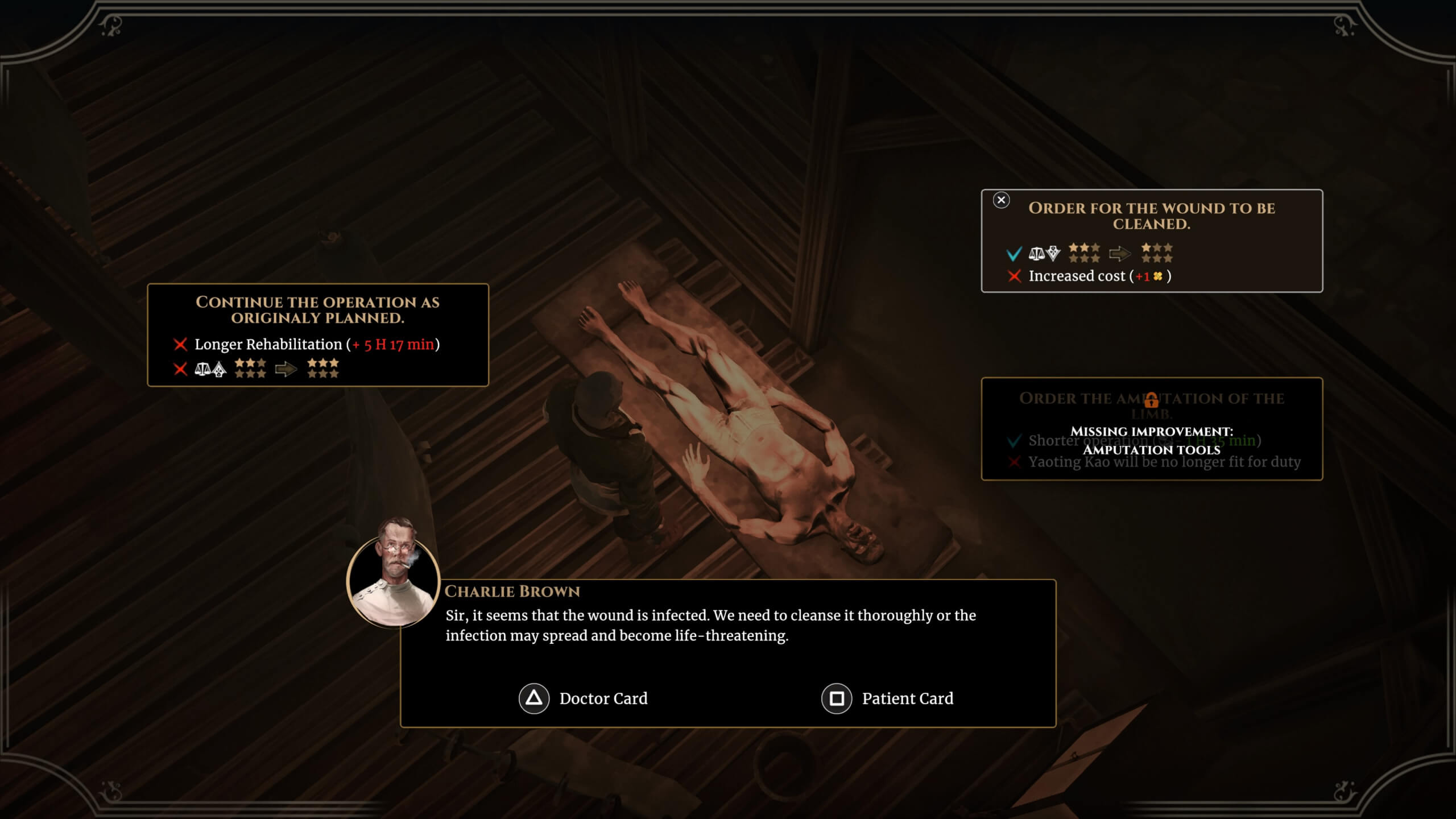
Treating Patients
Soldiers will come to the hospital and become your Patients. Patients will wait in the Casualty Clearing station until you assign a Doctor to them, though you can deny patients entirely. Each soldier will have a dossier with information about their condition, overall health, and chances of treatment failing.
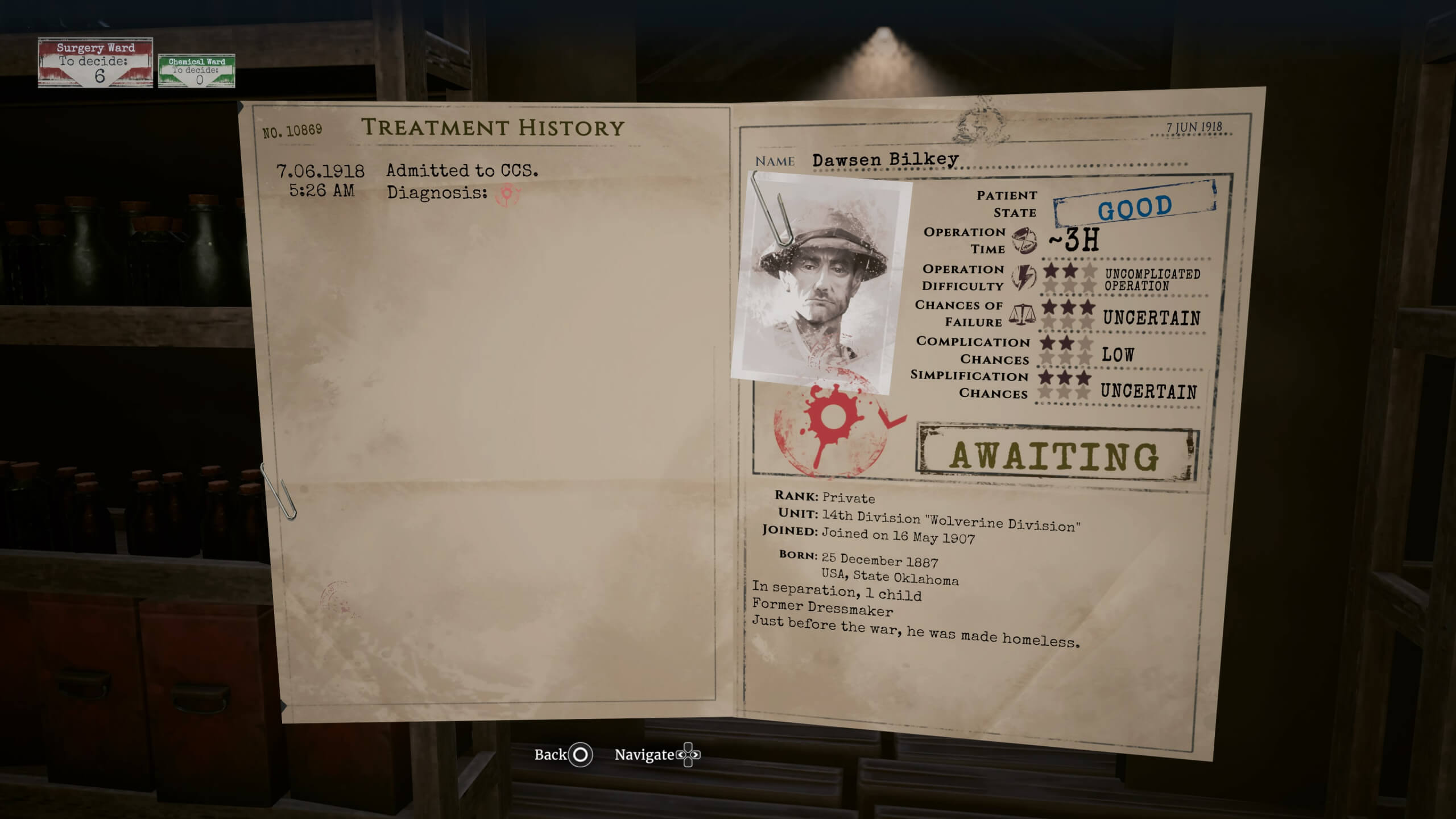
Stars (out of six) determine how likely a procedure is to fail or have complications. The higher the stars, the worse your chances are. For example, if Complication Chances has five stars, there is a high chance that the patient will suffer complications after treatment or surgery. Soldiers can arrive bearing Inflicitons. There are three Infliction types: Chemical, Physical and Mental. You will have to construct wards specifically for each to treat them.
Placing The Soldiers
If a soldier dies after treatment or surgery, the Medic Team will move them to the cemetery. If treatment or surgery is successful, the soldier must go to rehabilitation. A nurse must be assigned to the rehabilitation centre to carry out aftercare. Once a soldier successfully rehabilitates, you must choose where to send them.
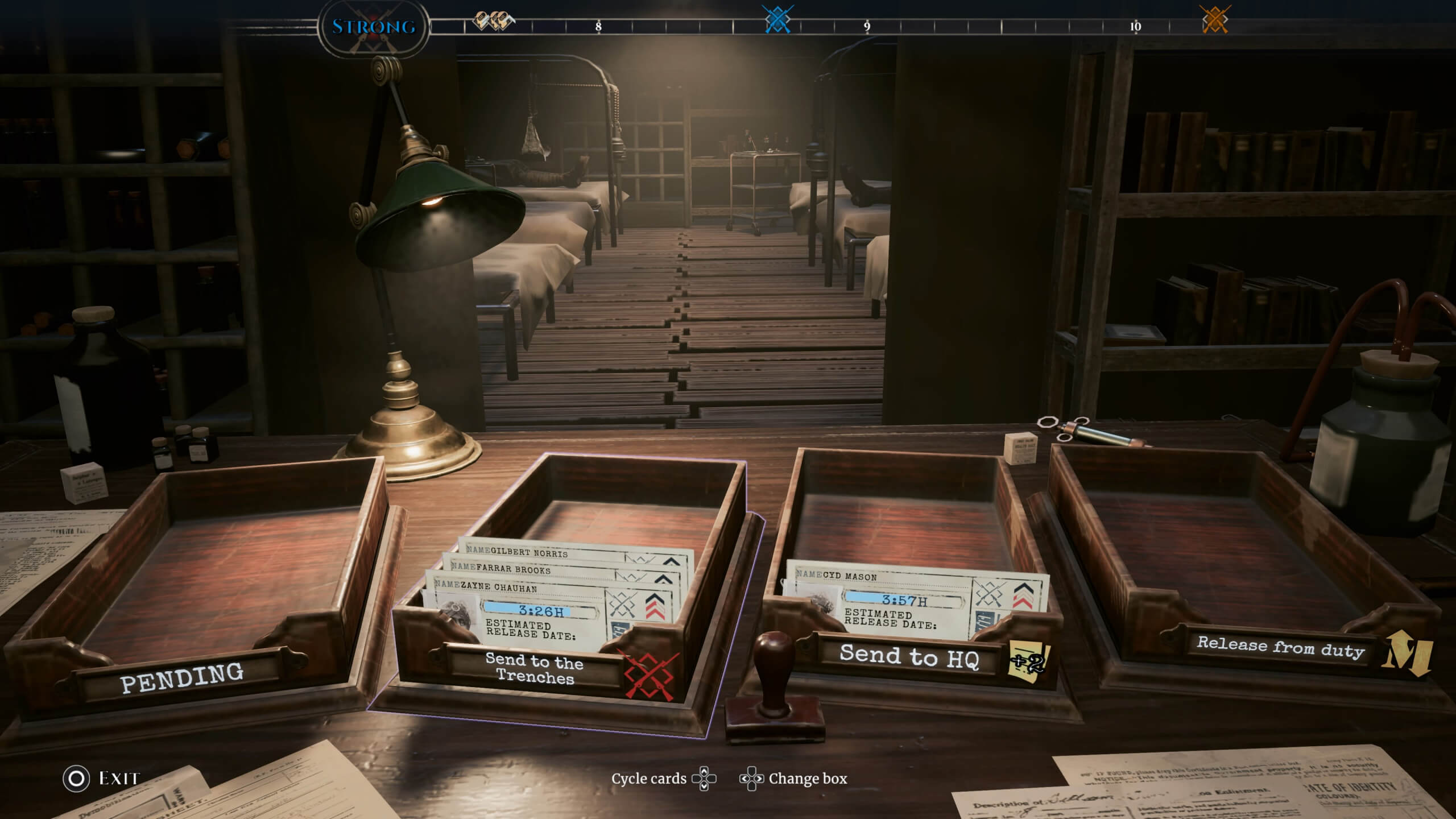
On the rehabilitation centre menu are three boxes beside the Pending box: Send To HQ, Send To The Trenches, and Release From Duty. Releasing them from duty provides morale. Sending them to HQ provides Military Drafts, used as permits for improving the camp and making new buildings. Sending soldiers to the trenches will strengthen your defence against enemy potential attack.
Defending The Hospital
There is a bar at the top of the screen that, as time passes, indicates how long until the enemy tries to attack. Once a gun symbol appears, enemy soldiers will try to invade your hospital. The gun symbol will either be blue or red. A blue gun symbol indicates that your soldiers are strong and you will successfully defeat the enemy. If you haven’t sent enough soldiers to the trenches and the indicator is red, your army is weak, and the enemy will win. If the enemy wins, the game is over.
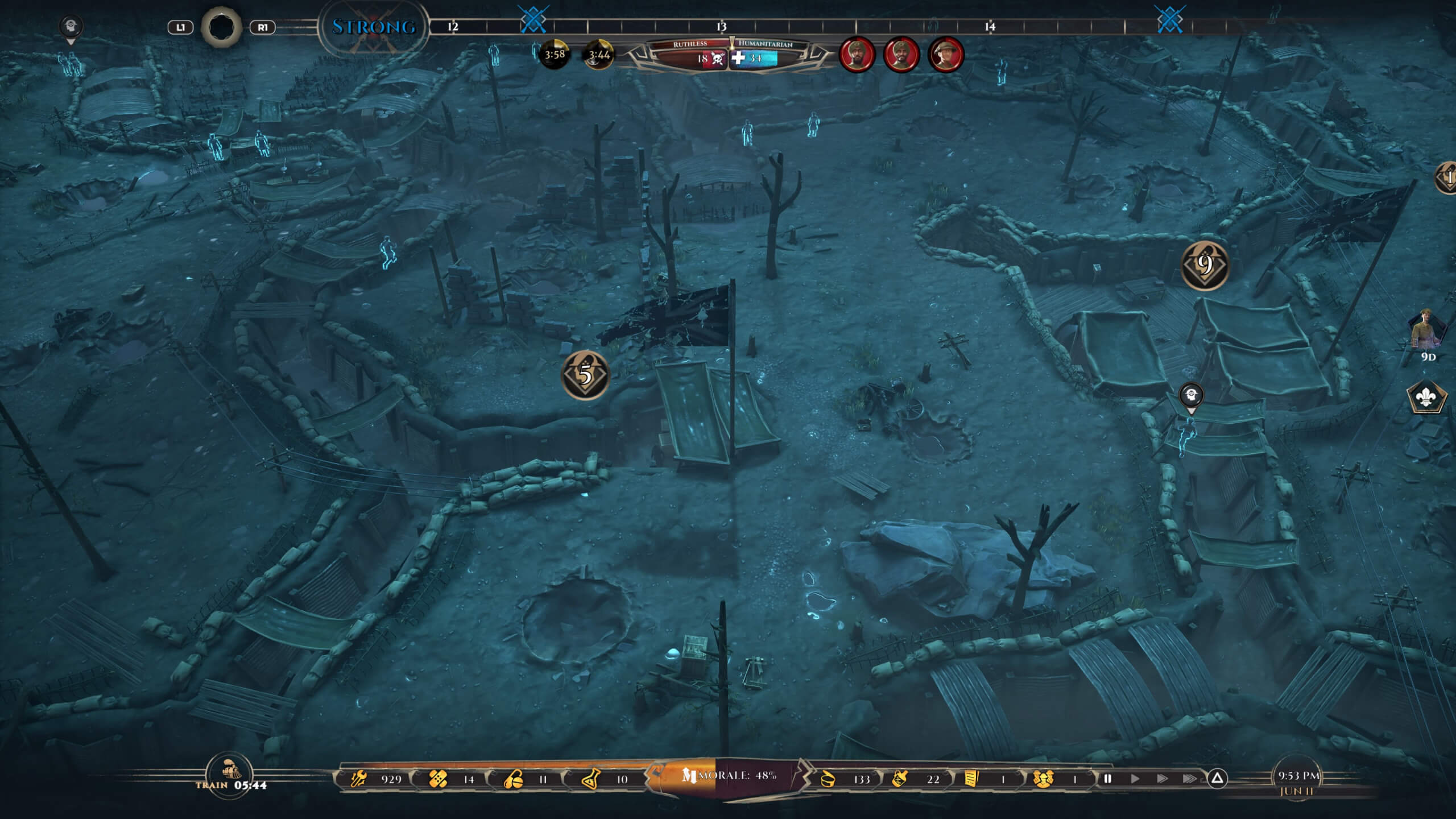
Resources & Caring For Everyone
Resources are finite, and besides Engineers, players must acquire more. The train station allows you to hire new staff (if you have a staff permit) and get more resources, but you must keep track of the train schedule. Staff and civilians consume food rations at the canteen daily. If you run too low on resources, you won’t be able to perform some treatments or operations. Additionally, not having enough food will lower morale. Staff need to rest occasionally because they will pass out and become unavailable if they’re left Tired for too long.
Events & Decisions
Events are random, and you must make a decision. A red exclamation point will appear on the map when one occurs. An event that, during surgery, will provide you with multiple choices. The choices can either increase or decrease a patient’s chance of survival. Some options are locked if you don’t have the means to execute them.
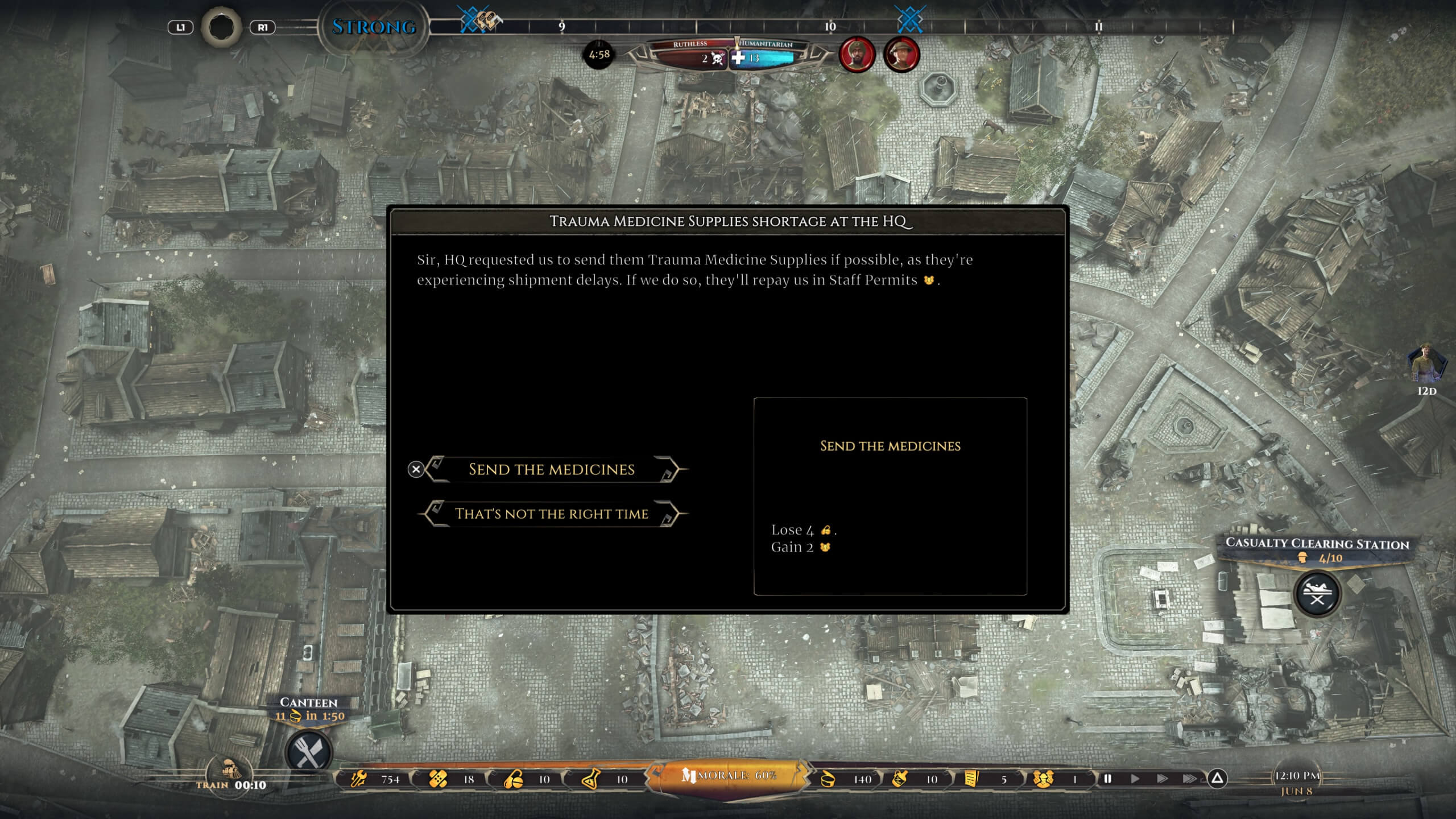
Other events will give you a scenario in which you must decide what you do about it. Sometimes, you may earn a reward or a penalty. Your decision may also have consequences later on. For example, in one event, some food had gone mouldy. My choices were to throw food and lose 60 rations or cut off the mould and lose 30 rations instead. After choosing to cut the mould off, a later event revealed it had given staff sickness.
Longevity
War Hospital has the potential to take many hours. I had to restart the game multiple times as there was a steep learning curve, and often, I would end up at a stalemate where I was without the means to progress. Other times, I was unaware of some mechanics, which led me to lose soldiers. After seven hours of gameplay, I hadn’t gotten remotely close to Act 2, so while players could spend a lot of hours on War Hospital, it could be a bad or good thing, depending on how much some mechanics may confuse or frustrate players.
Final Thoughts
Overall, War Hospital is an enjoyable game and does its job well. I would recommend it to people who regularly enjoy management simulators. However, some minor improvements would drastically improve the experience.
I found it challenging to get more staff. The only way to get them is as a reward for events via Staff Permits (ordering them at the train station) or helping VIP patients. It made it hard to progress as sometimes I wouldn’t earn a staff permit from events or VIPs for long periods. Additionally, I wished events popped up more frequently so I would have more opportunities to get staff permits or other rewards.
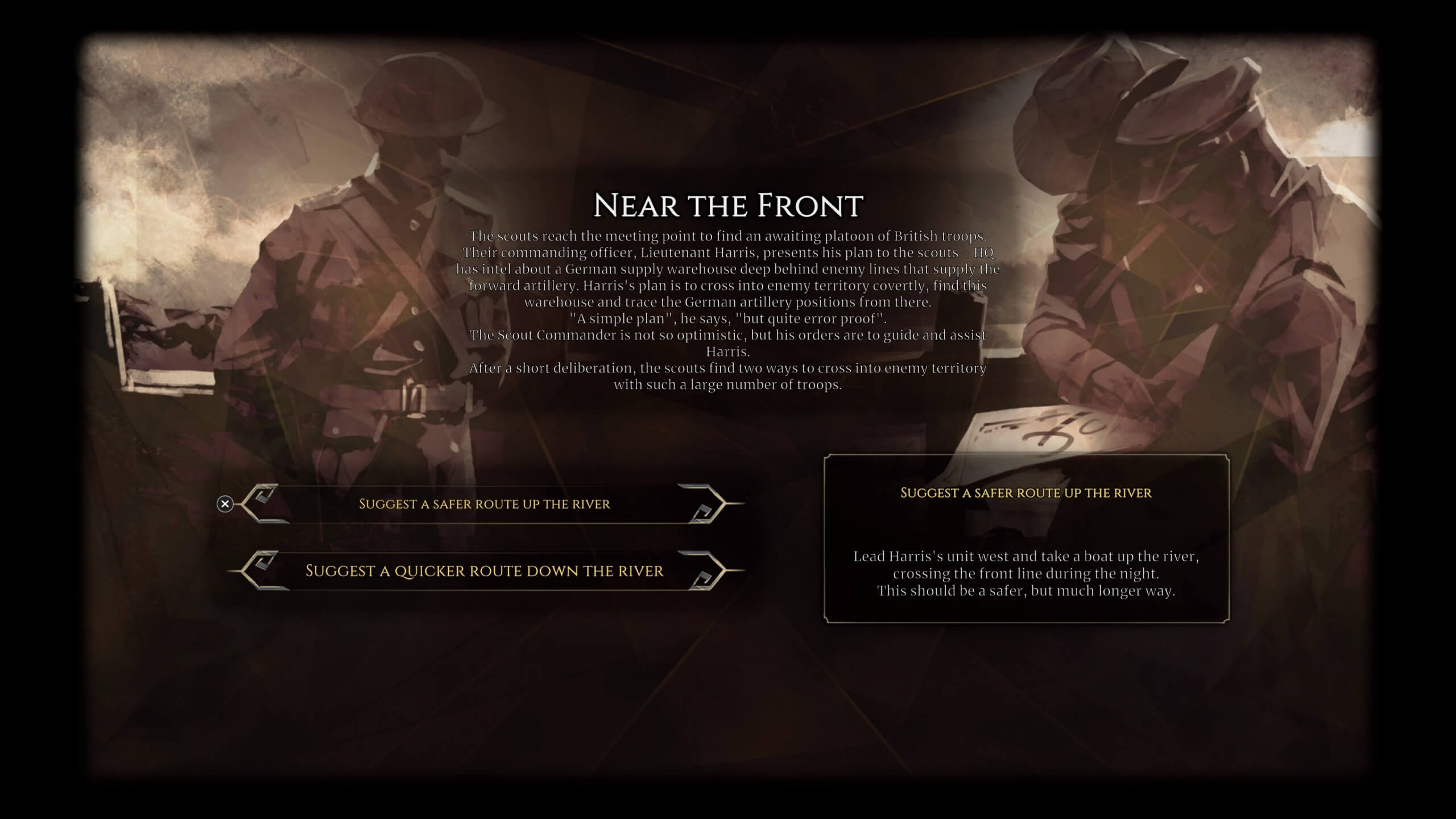
When you deny patients, they eventually die anyway. I believe that while it makes sense that denying a seriously injured soldier treatment would result in death, it doesn’t make sense that a lightly injured or barely ill soldier should die. I think it would be better if less seriously ill or injured soldiers left and returned later with worse conditions or a higher chance of complications.
Combining these two factors with the need for Doctors to rest, it was frustrating having the space for new staff but never getting the opportunity to get more. As a result, I frequently had to deny soldiers, which lowered morale and led me to a stalemate in my progress. If these issues are improved, I believe it would take this solid game even higher.
I award War Hospital the Thumb Culture Silver Award.

Disclaimer: A code was received in order to write this review.

YouTube | Facebook | Twitter | Instagram | Discord | Podcast
